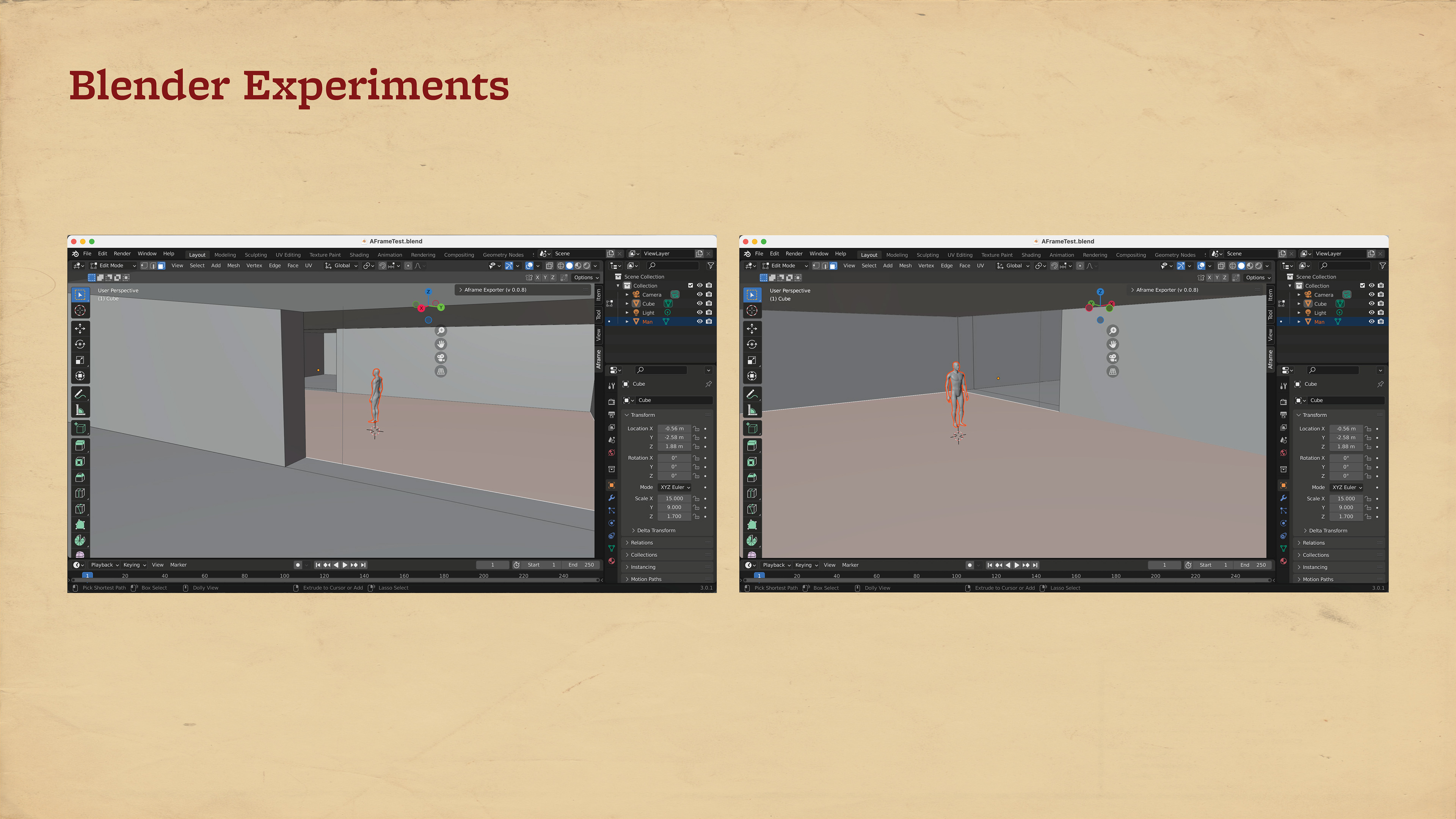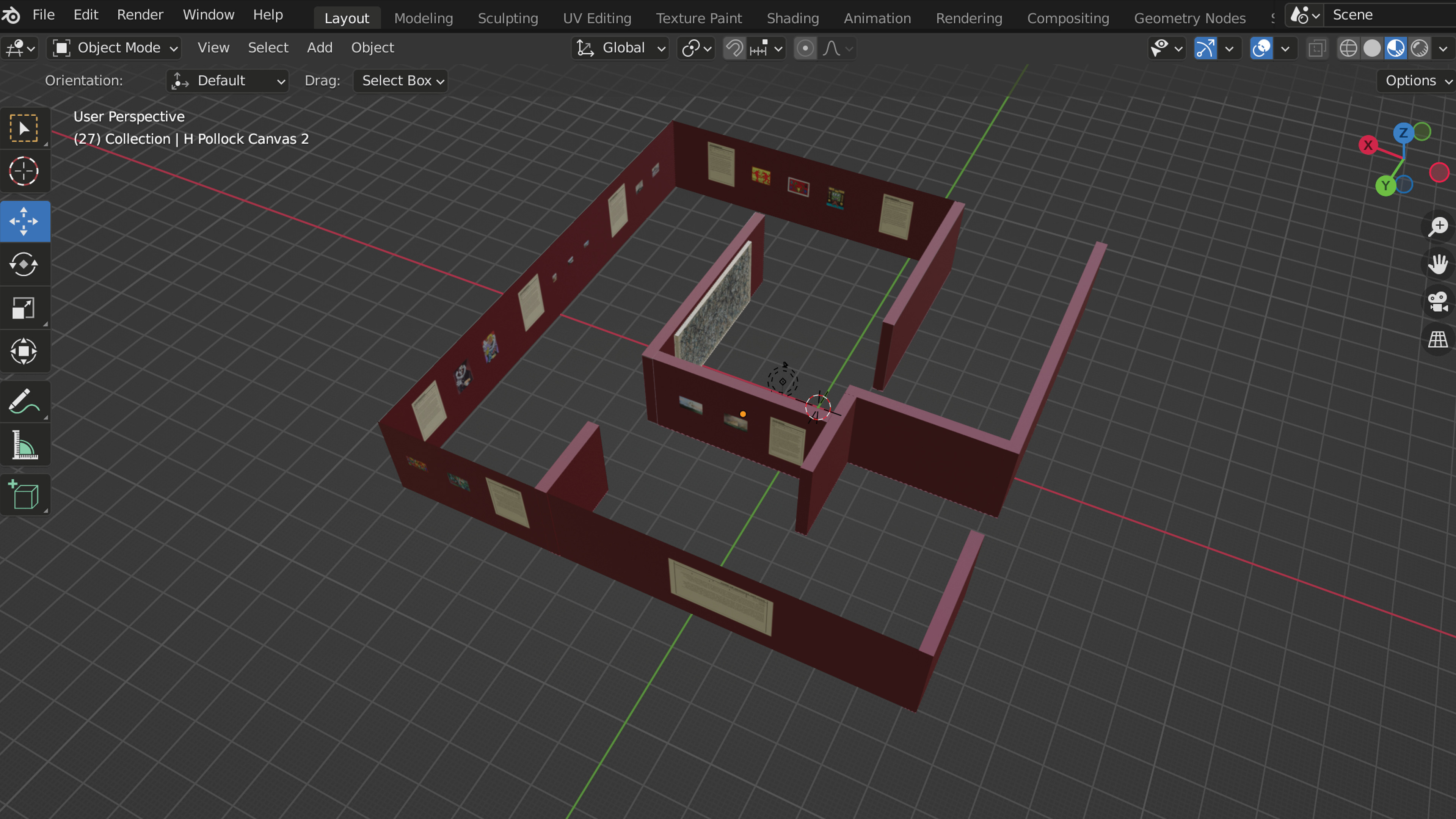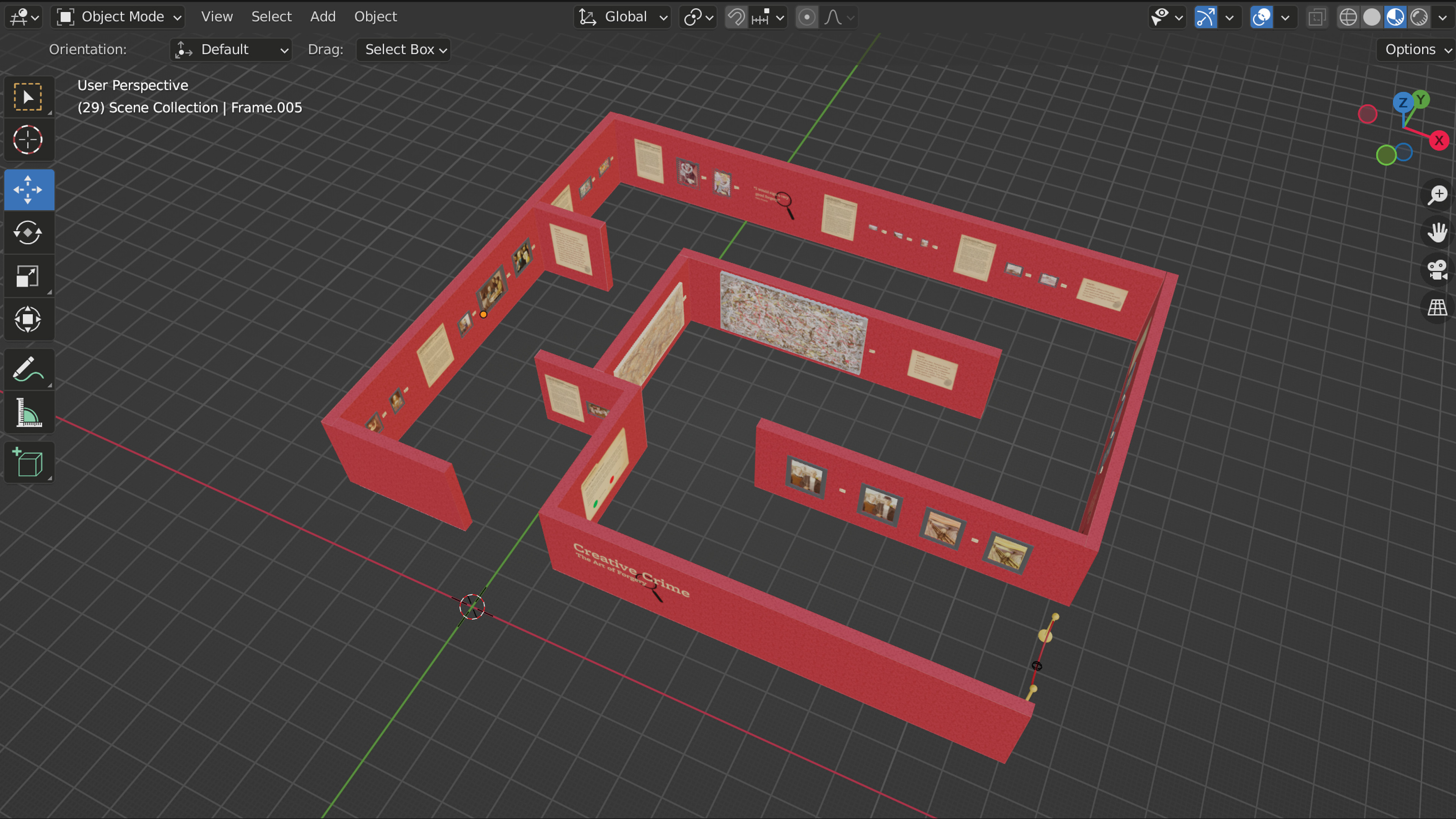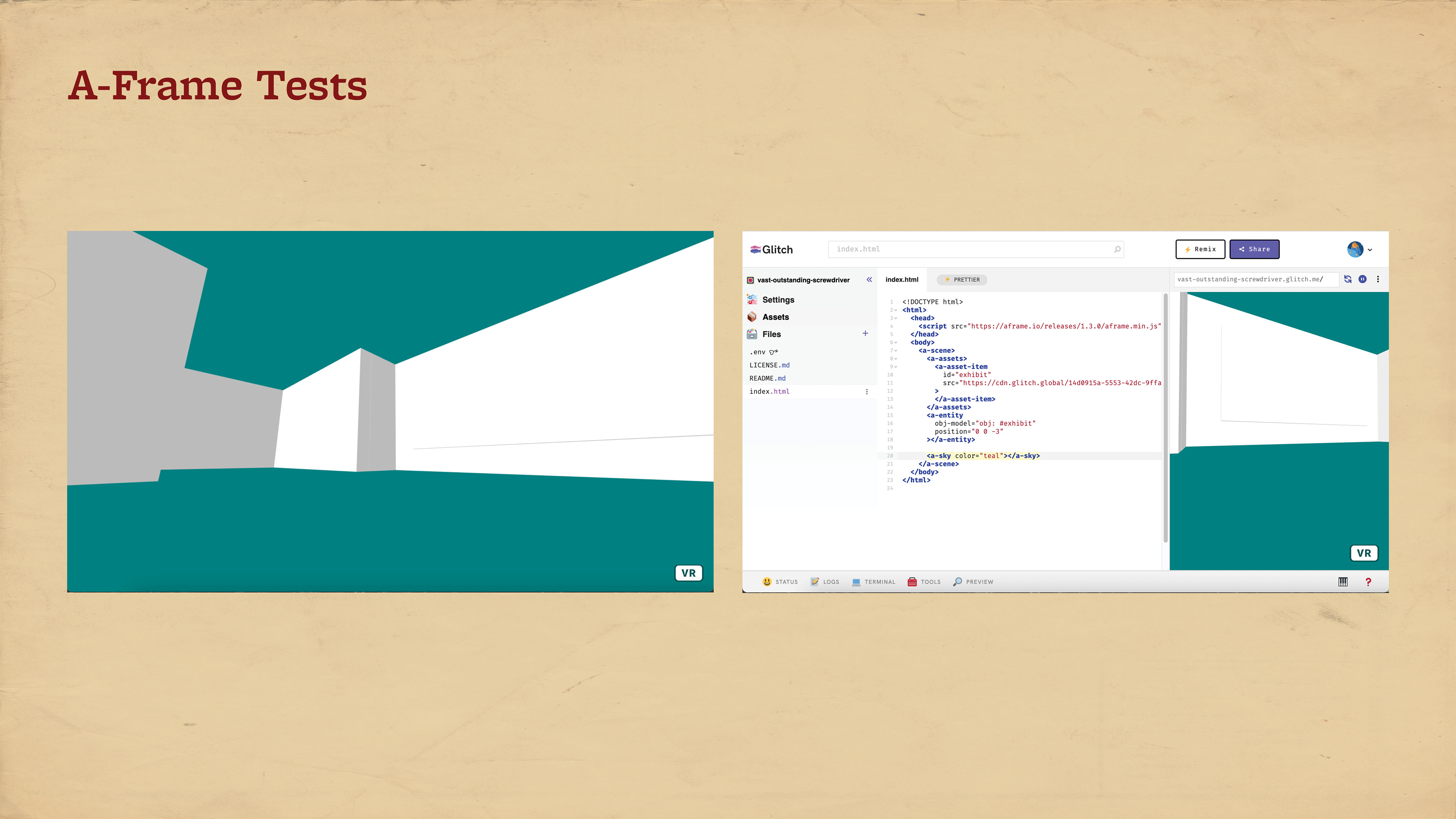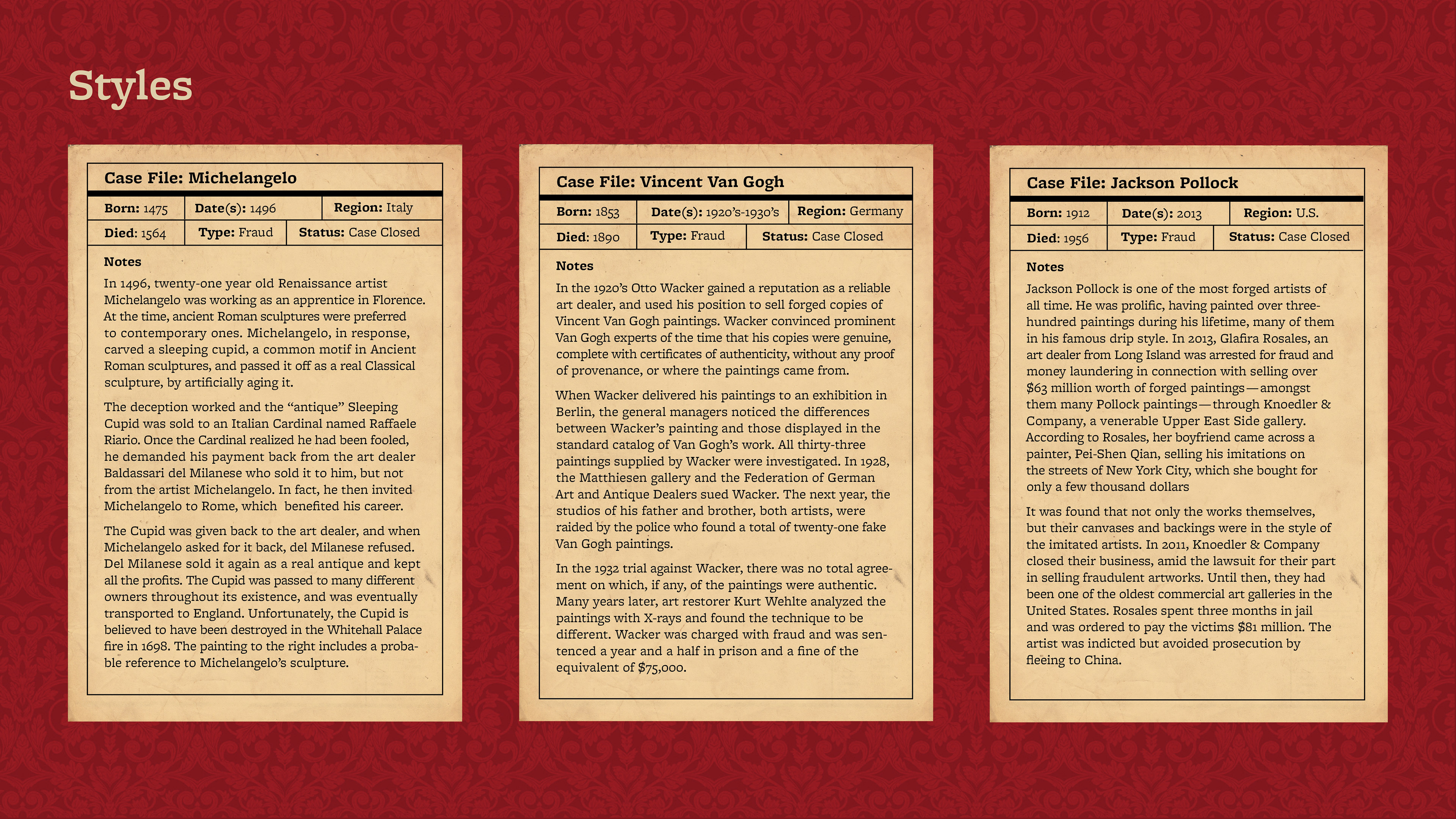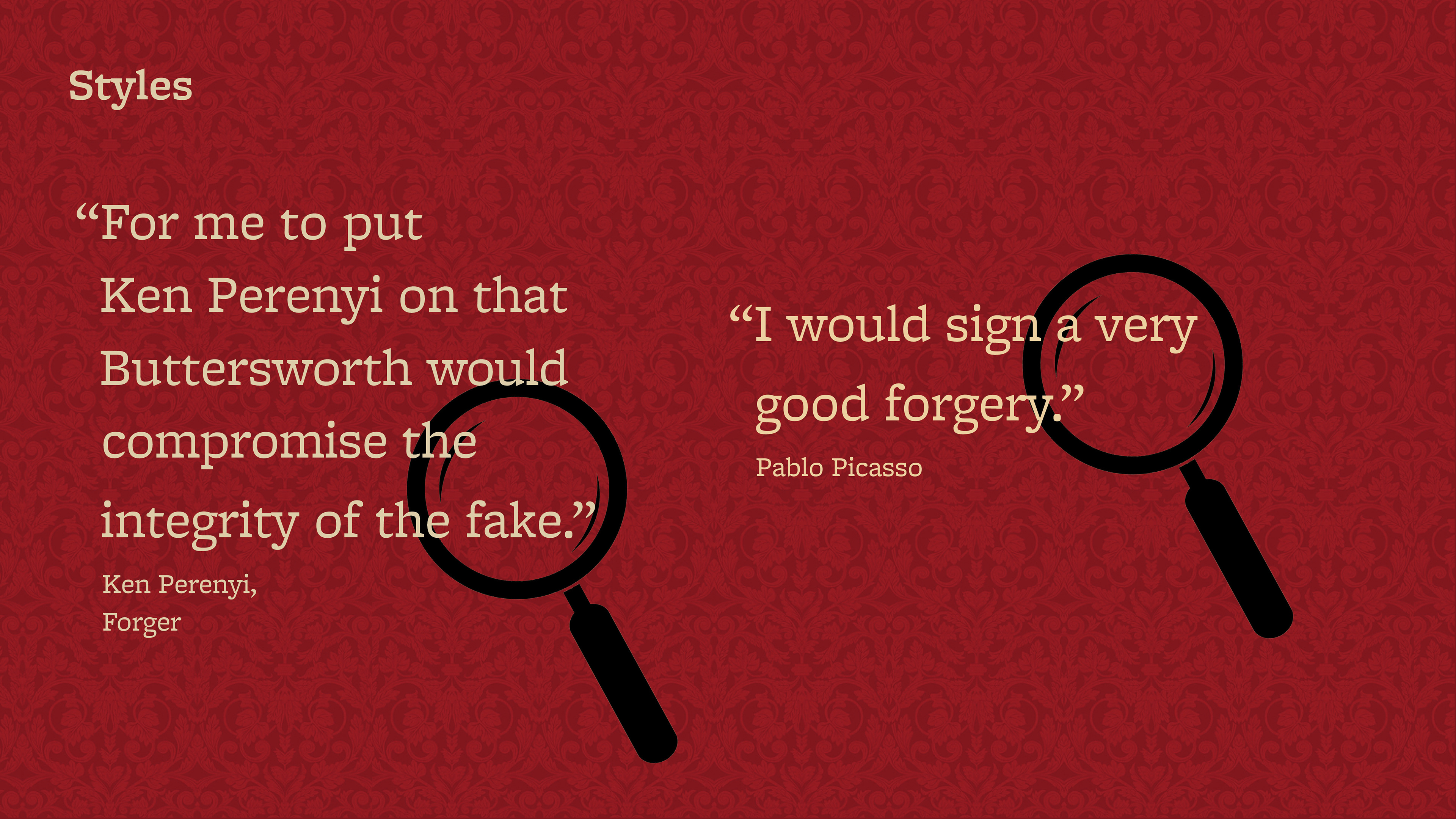In the wake of the COVID-19 pandemic, art museums have introduced more digital exhibitions, expanding how visitors can interact with their artworks. As a way to explore designing for a 3D digital interactive space I wrote, designed, built, and coded an exhibition on the art of forgery. I chose a topic that would take advantage of the uniqueness of virtual exhibits in which artworks that would never be seen together are able to coexist in the same space. The digital space was designed just like a physical one, including the placement of walls, color choices, plaque locations, lighting, wayfinding, and other elements of on-location exhibition design
Creative Crime: The Art of Forgery is an exhibition that allows visitors to move around virtual rooms displaying forged art side-by-side with their original counterparts. Some of the biggest, most bombastic, expensive crimes in the art world come from forgeries and fakes. The general public and even art-museum lovers are unaware of the extent of art forgeries and how much they impact museum collections and the reputation of the artists.
Experience Creative Crime: The Art of Forgery here at your own pace (this link might take a few seconds to load – if its a solid blue-teal screen, wait a few moments before refreshing). Find out how Michelangelo fooled a Cardinal, how a forger duped a Nazi, how a fake with a misspelled signature got sold, and more! Plus, enjoy an interactive guessing game where you can test your detective skills. You will need a keyboard and mouse or trackpad to walk through the exhibition. Below is a walkthrough if you'd prefer to view it that way:
While at MassArt, I doubled majored in Communication Design and History of Art. I knew I wanted to combine the two somehow for my final Degree Project in Comm Design and Creative Crime: The Art of Forgery was the result. If you have any interest in reading my full process book or my undergrad History of Art thesis (Chapter 7, page 132) on the role of forgeries in the art world you can read it here (the Table of Contents is linked so you can jump ahead).


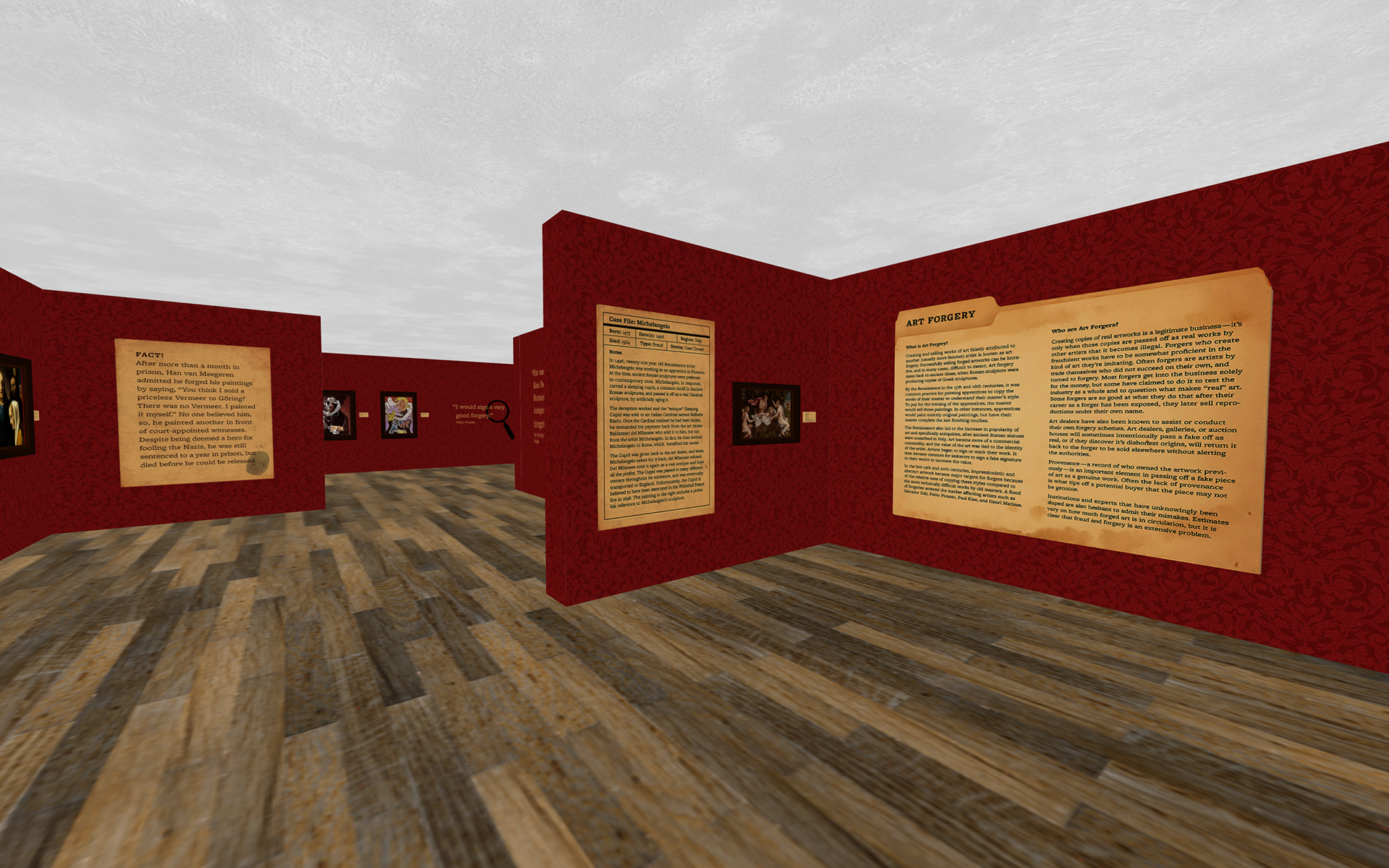


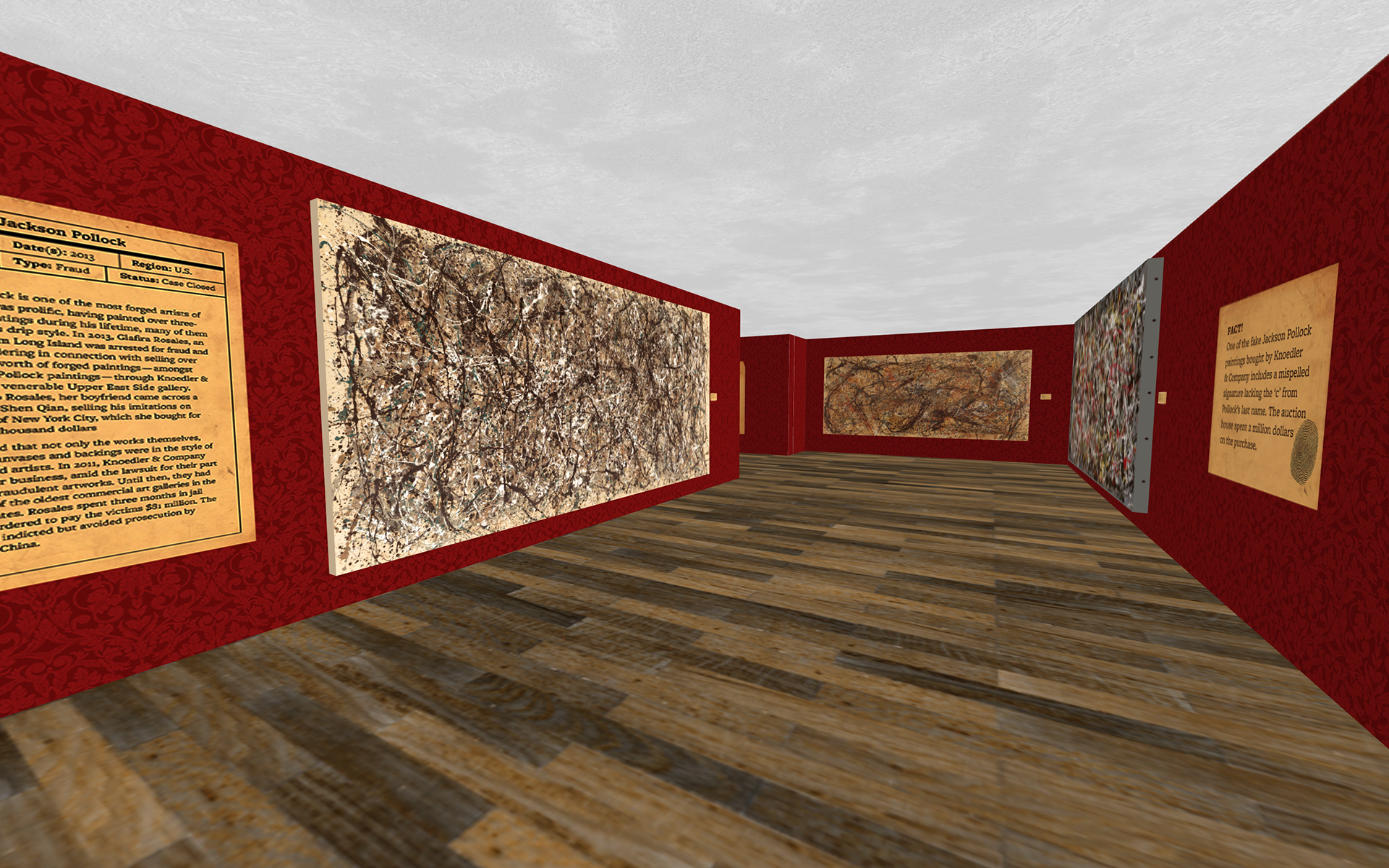




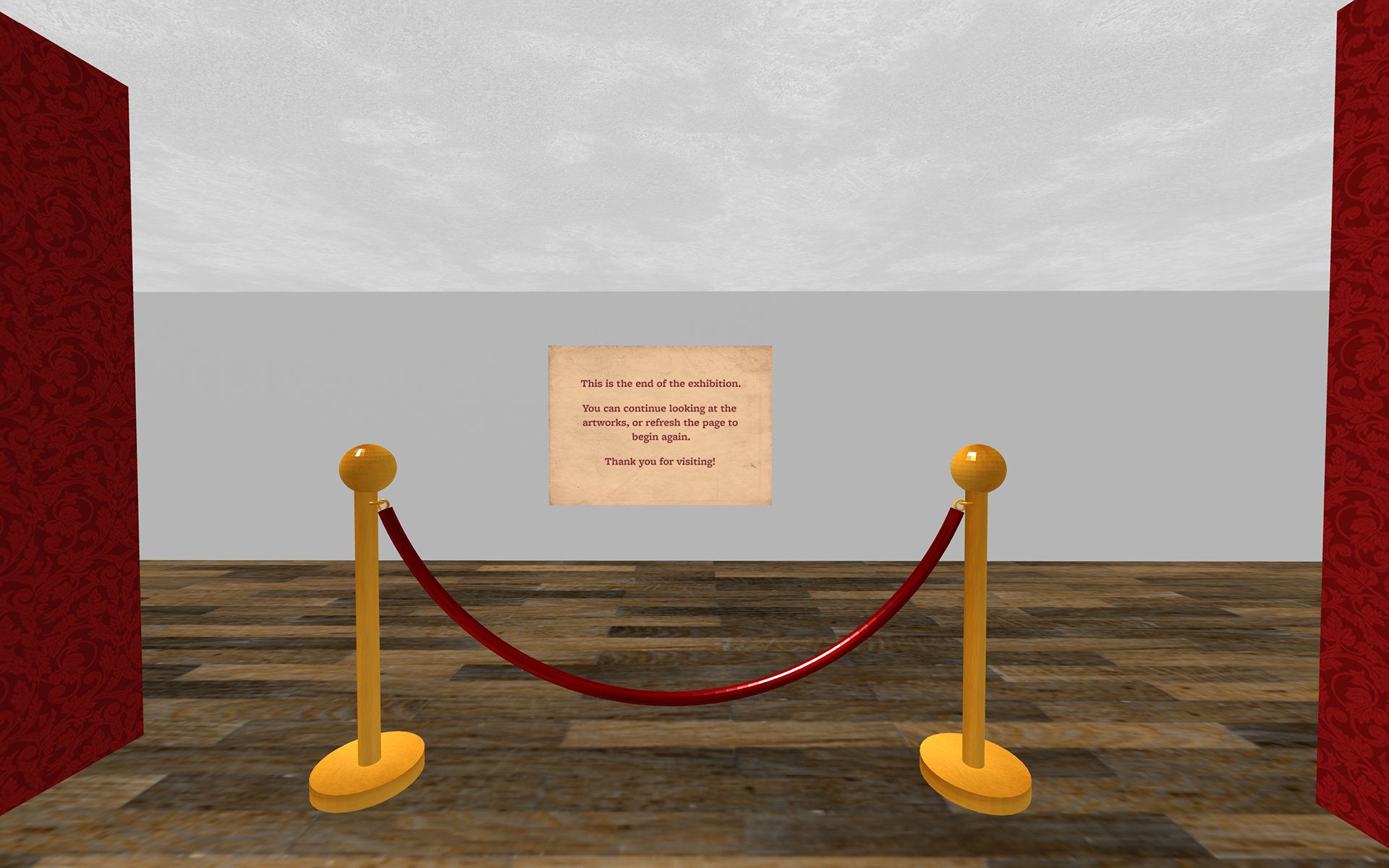
Below is some of the process I went through to make Creative Crime. I did everything myself; in the research stage I wrote the copy, found and scaled the paintings down to 1/10th size, researched exhibition design, and figured out the best way to display the paintings and their stories. After that I had to figure out how to build the exhibition in three dimensions. I designed the flats in InDesign, but I had to learn how to use Blender and design the 3D elements in there (including elements like the plaques and the frames).
Then after I had built the exhibition I imported it into the coding site Glitch with a plug-in that allowed me to code in three dimensions, called A-Frame, and then had to upload all the textures from the Blender file and manually update the code. It was well worth the effort though, because now it can be accessed by anyone and can be interacted with (almost) like a real museum!

